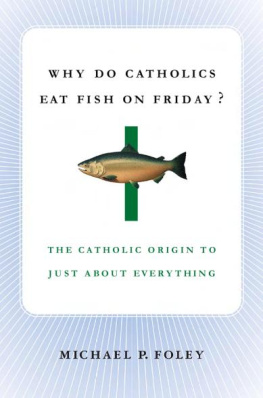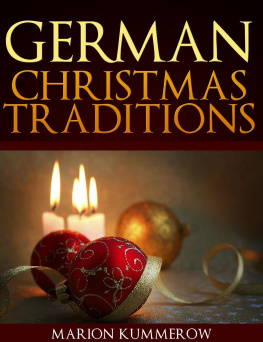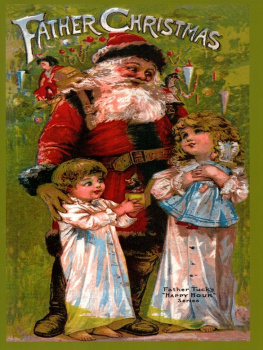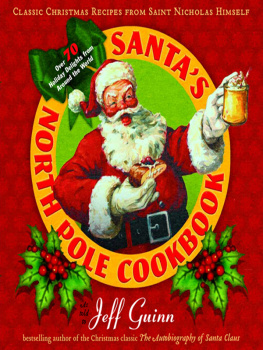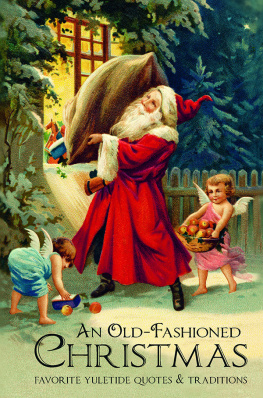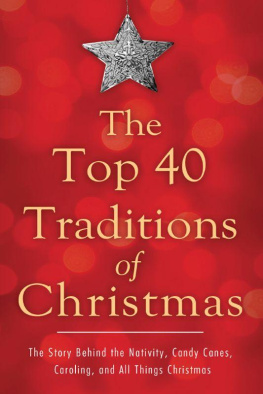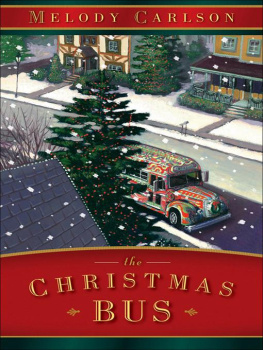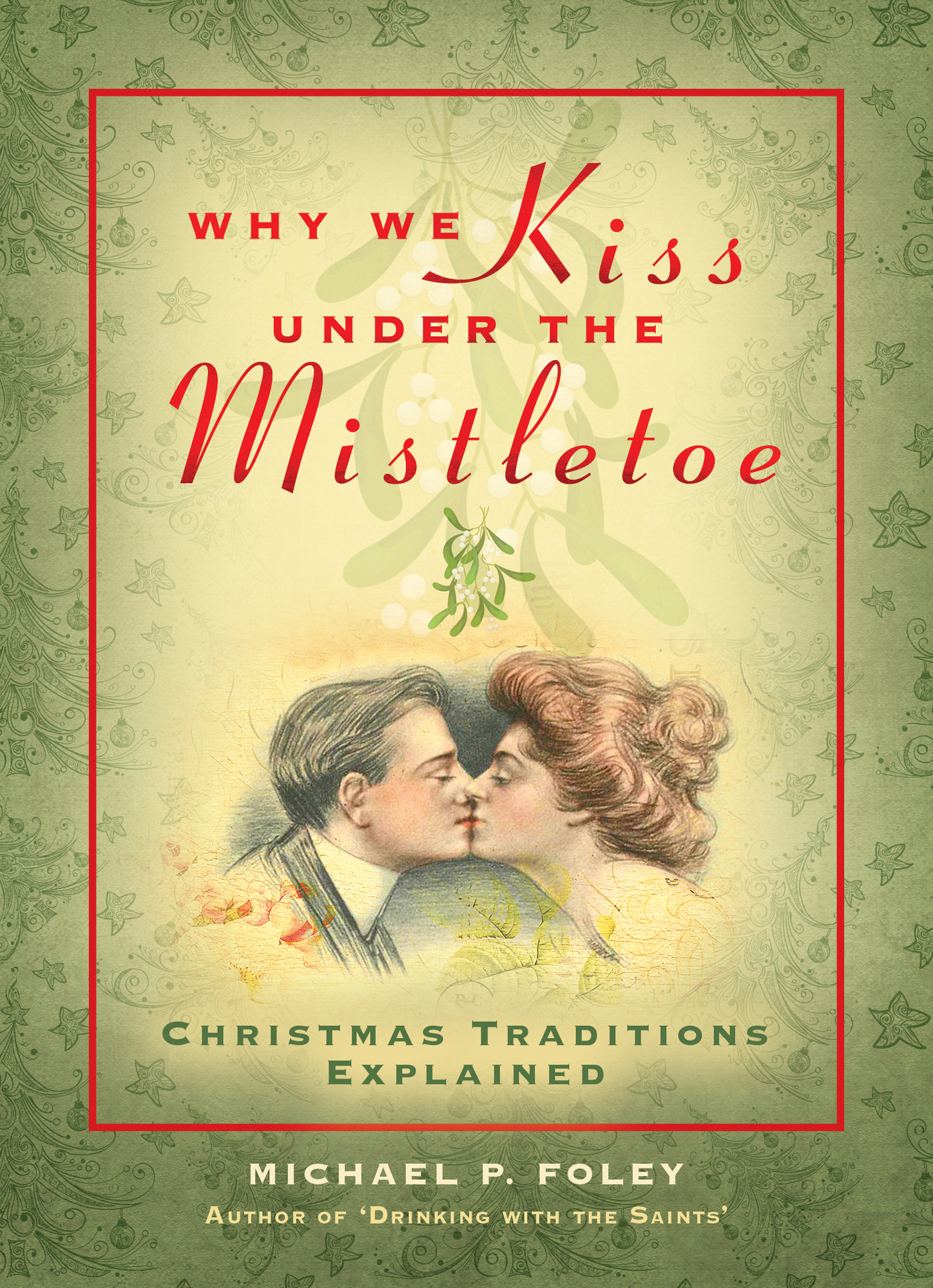Contents
Guide
Why We Kiss under the Mistletoe
Christmas Traditions Explained
Michael P. Foley
Author of Drinking with the Saints
Praise for W HY W E K ISS UNDER THE M ISTLETOE
This marvelous book may present itself as a Silver Stream on the open road, but under the hood it is a heavy-duty all-wheel pick-up with tremendous historical grit. Michael Foley has neatly balanced the popular style of the book with careful research in biblical (and especially) historical insight. In a word, it works, and well. The book is lively and engaging and teeming with a historians experience and familiarity with a vast array of intriguing subjects. Highly recommended.
STEVEN C. SMITH , author of The House of the Lord
Why We Kiss nder the Mistletoe does more than tell us about the clever ways weve justified our stolen smooches. It ranges across cultures and languages, history and lore, poetry and song, and then it takes this one life we have and the forms and trappings of one of its most joyous expressions and puts them all under the revelatory power of a Drummond lightall without making us feel as if were reading a masters thesis on the etiology of the aetosaurs eating habits or some other topic of inexpressible tedium.
JASON PETERS , professor of English, Hillsdale College
To the master of holiday books, the Reverend Francis X. Weiser, S.J., and to all the members, living and deceased, of the Christmas Parish of which he was pastor, Holy Trinity German Catholic Church in Boston, Massachusetts

I NTRODUCTION
In all the civilized world there is no spot so secluded, and, perhaps, no heart so dark that the sound of Christmas chimes fails to awaken in it a sense of joy and exultation. Round and round the earth rolls the grand sympathetic melody, calling on rich and poor alike, to put aside for a day all disputes and jealousies; and over and above all trouble and perplexity swells the sublime, reiterated strain: Peace and good-will, good-will and peace, peace and good-will to all mankind.
T he anonymous author who wrote these words in 1871 may have been a bit melodramatic, but his claim still strikes a chord today. What is it about Christmas that continues to captivate our hearts? Is it the childhood memories of presents under the tree? The sentimental music? The sense of coziness? Certainly the religious reason, the birth of the Savior, is cause for celebration, but most people hold Christmas dearer to their hearts than Easter, which is technically the more important feast in the Christian year. Why Christmas?

One of many Norman Rockwell Christmas-issue magazine covers. American Boy
This book helps to answer that question by giving you a history of the holiday and the meaning behind the customs that make it so special. In this book you will learn just about everything you need to know not only about the big day itself but about the long buildup to it and the comet tail of celebrations following it. While most Christmas books cover only a few days of the year, we will take you through over two months of merrimentand cover customs treasured in dozens of different cultures, spanning twenty centuries of history.
And as we do, we will carefully separate fact from fiction, unearthing the true meaning behind many of our most beloved Christmas customs and tales. The Christmas story is so storied that there are now even myths about Christmas myths. With an impartial but loving eye, we lay out the various theories about why we do what we do. Where does the Santa Claus legend really come from? Is the Christmas tree a pagan yuletide observance? What exactly is a carol? Is Groundhog Day a part of the Christmas cycle? And, of course, why do we kiss under the mistletoe?
Finally, we introduce you to a side of Christmas that you did not know existed, from forgotten traditions of mischief and mayhem to ghoulish figures haunting the holiest of nights.
All told, this book will introduce you to hundreds of magical figures, foods, drinks, songs, superstitions, practices, and, above all, stories about the most wonderful time of the year.
It is our hope that this book will deepen your appreciation of the Christmas season and enable you to celebrate it with heightened understanding and greater joy.
Merry Christmas!
Chapter One

C HRISTMAS S R OLLER C OASTER P AST
T he origins of Christmas are more tangled than an old box of Christmas lights, and its history is rowdier than a 1960s holiday office party.
O RIGINS
Lets start with the origins. The Gospels according to Matthew and Luke provide the only canonical accounts that we have of the birth of Jesus Christ. According to these narratives, the Blessed Virgin Mary and St. Joseph were espoused, that is, they had completed the first stage of a first-century Jewish wedding (the signing of the marriage contract) but not the second (the introduction of the bride to her husbands home, which could be months and sometimes more than a year later). During that waiting period, Mary conceived the Christ Child through the agency of the Holy Spirit and then left town for three months to help her aged cousin St. Elizabeth give birth to St. John the Baptist. When she returned, St. Joseph noticed that she was with child. After being told by an angel in a dream to take Mary to wife (that is, to complete the second stage of the wedding, taking her into his home) and to adopt Jesus as his own, he did so. As the time drew near for Mary to bear her Son, the holy couple traveled from their home in Nazareth to Bethlehem in order to be enrolled in a Roman census. Because there was no room for them in an inn, Mary delivered her Child in a stable, which according to oral tradition was a sheltered cave (where Bethlehems Basilica of the Nativity now stands). Angels announced the good news to nearby shepherds, who came to adore Him, and Magi who had been following a star from the East did so as well, but only after they had paid a visit to King Herod to inquire into the whereabouts of the newborn King. The question unsettled the paranoid and wicked Herod, who ordered the death of all baby boys in Bethlehem in an attempt to eliminate the competition. Joseph, however, was warned of Herods plot in a dream and fled with the Holy Family to Egypt. After Herod died, another dream told Joseph that it was safe to return to Nazareth.
Critics of the infancy narratives claim that the facts do not add up: Herod the Great was not king when the census of Quirinius was taken but rather died four years before the birth of Christ; the census would not have been taken during the winter and would not have required bringing ones expectant wife; there were no astronomical anomalies (no Christmas star) that we know of in 1 B.C. A.D. 1, and so forth. Biblical critics also claim that because the story of Jesus birth resembles that of Moses in some respects (both, for example, involve the slaughter of innocent boys), it must be fictitious.


